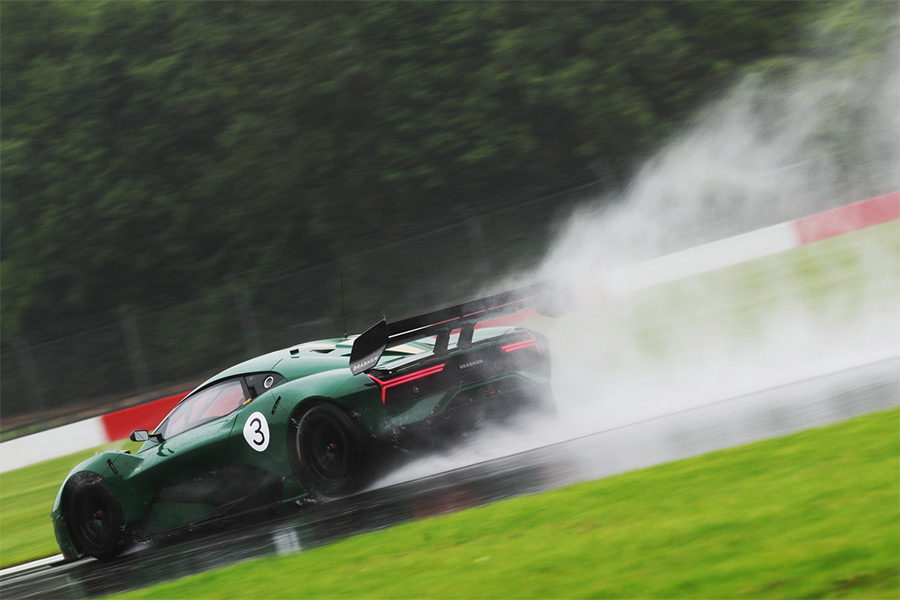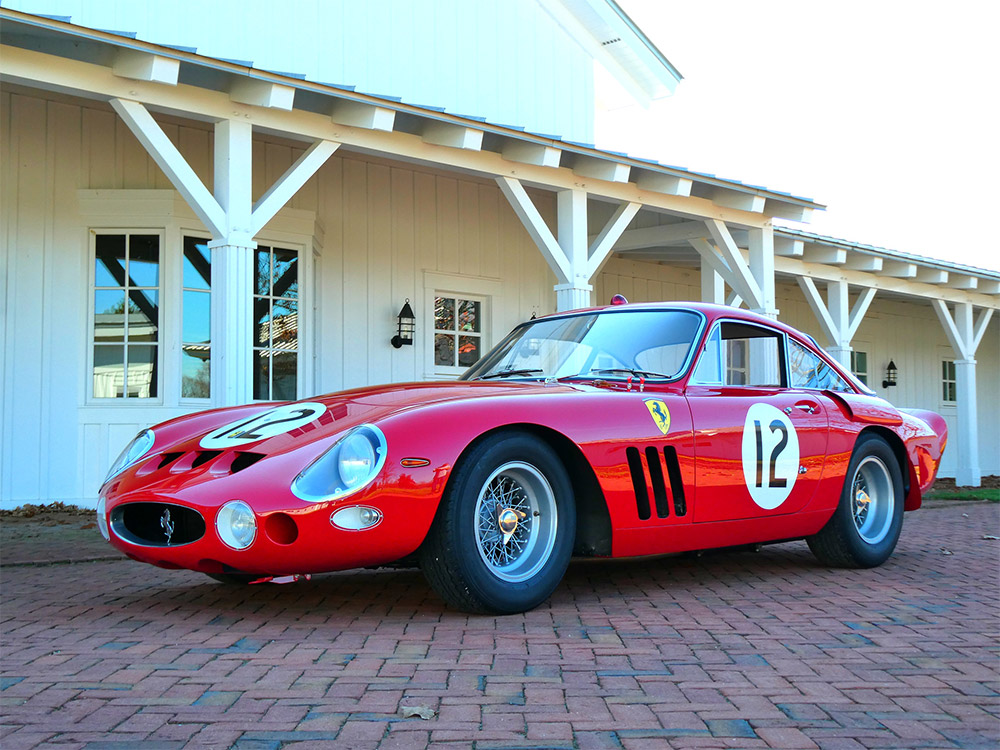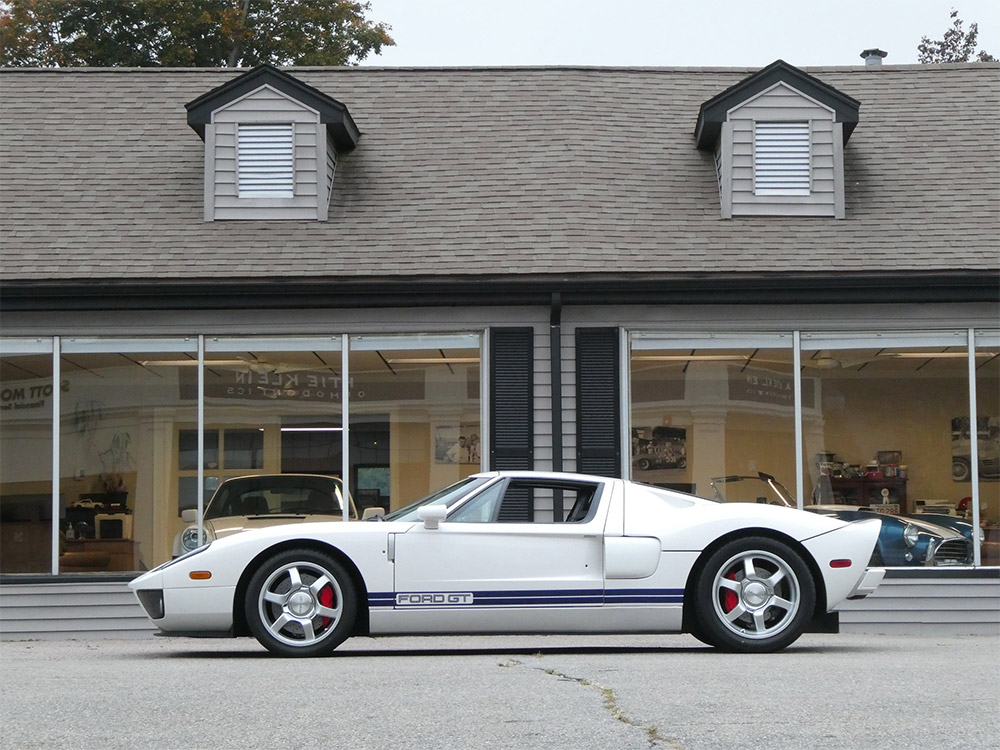The Brabham name is synonymous with extreme high performance and advanced vehicle dynamics. Nowhere is this more evident than in the aerodynamics of the BT62. Designed to balance form with function – great looks, brilliant surface performance and incredible levels of downforce – the BT62’s aero treatment provides outstanding on-track performance.
You don’t have to take our word for it. Leading motoring journalists around the world who’ve tested the BT62 on track called it “mind-bendingly quick” with “incredible lateral g-force and grip” generating “awe-inspiring confidence”. Top Gear called it the “world’s most track focused hypercar”.
We’re proud the media enjoyed the BT62 but what’s most important to us is our customers. The BT62’s potential to smash lap records, most notably at the fabled Mount Panorama in Bathurst where the car went quickest last year, is no secret, but our customers have to experience this exhilaration for themselves. When they do, whether they be novice track drivers or pro-racers who’ve competed in the car, they all agree. Not only is the car easy to drive, it’s an exercise in dynamics that few other vehicles even come close to.
So how does the Brabham BT62 deliver such dizzying performance and smash records on The Mountain while still giving novice drivers that feeling of total confidence?
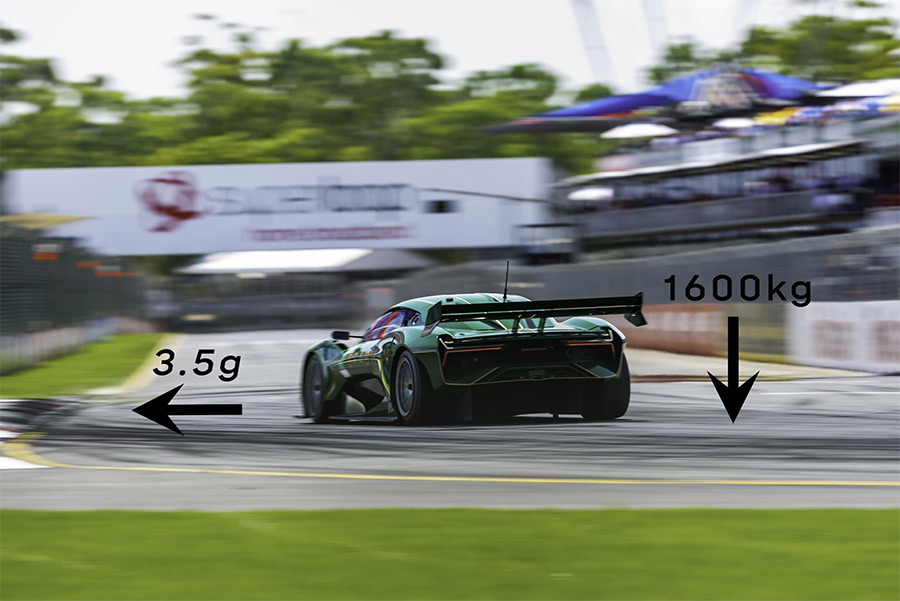
A key element of this is the BT62’s aerodynamics.
With the world currently battling the COVID-19 pandemic by staying safe and staying home, and with the Brabham engineers focusing on how they can support the battle against COVID-19, now seems a good time to provide a diversion and look behind the scenes with our engineers.
One of the keys to BT62’s performance is grip and aerodynamics. That comes from a two-headed, but singular, conundrum that every serious sports car faces – balancing downforce vs drag perfectly.
Downforce uses nature to help the car by directing airflow to push the car into the track, enabling far better grip and stability. Drag is the tendency for air to slow the car down. Vehicle aerodynamics is all about managing airflow to provide the downforce and cooling that you need while allowing minimal drag.
The Brabham BT62 has numerous design features aimed specifically towards these ends.
The development and refinement of these aerodynamic elements took place as the vehicle engineering matured and the vehicle testing intensified, during which time engineers transposed the styled form of the BT62 into the Computational Fluid Dynamics (CFD) model environment. The model’s sensitivity was then correlated with real world data in order to ensure that the model was giving verifiable data and an accurate understanding of the airflow over the car.
With the CFD model honed, new engineering elements were introduced and detail changes made one at a time, working front to rear, to quantify their combined impact on overall performance and cooling. Whilst elements are introduced one at a time, effects are measured as a whole. The primary aim was to ensure that every change resulted in all elements working in harmony with the airflow.
The result is a body design that shapes the air as approaches and then moves through it. Low pressure air is moved out and around the car while high pressure zones at the front and rear act to glue the car to the road and keep it stable at high speed and in the corners.
The illustrations below show how low pressure air is streamed around the car as it passes through the air. The goal is to keep low-pressure air from the underfloor and rear wing while directing flow for cooling where it’s needed, with highest pressure air being used to create downforce on the wings and body surfaces.
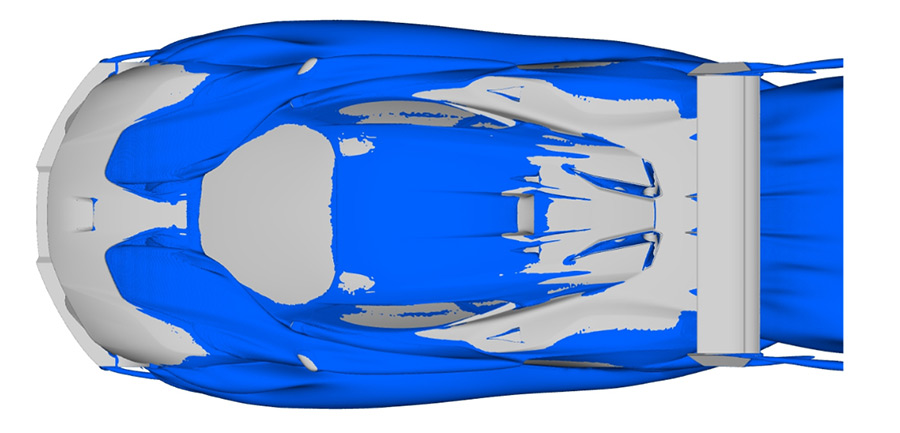
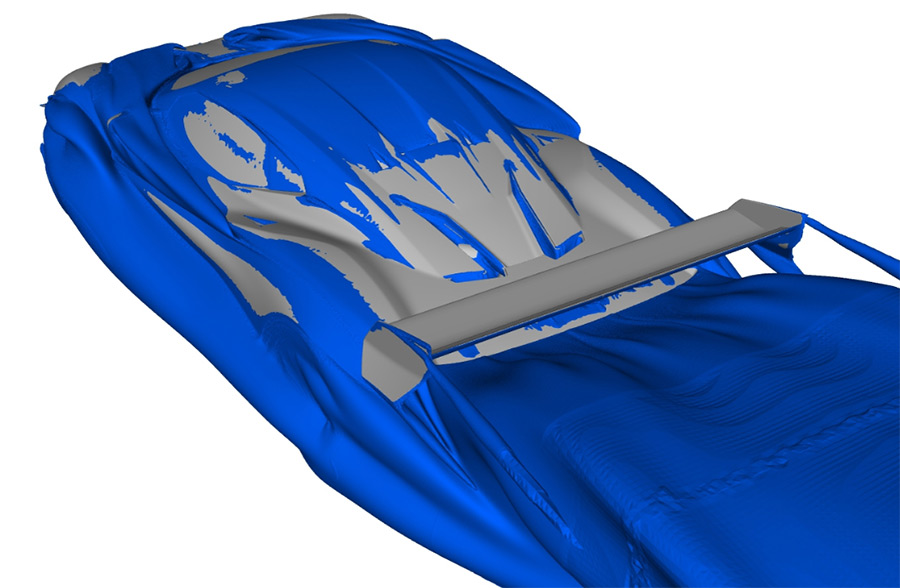
As air hits the front the spitter, high-pressure air provides downforce for the front of the car. Air then washes through the radiator and vents through the front hood, where the vast majority is diverted around the sides of the car. Lower down, the end plates on the front splitter generate low-pressure vortices that manage flow along the side of the car, instead of allowing it to flow underneath where it would impact the floor and rear diffuser.
The underfloor of the car is completely flat, an important element in retaining low pressure. High air pressure on the under-surface of the car would cause lift. Maintaining low pressure underneath assists in maximising downforce and is critical for vehicle stability at higher speeds. The low-pressure underfloor area contributes to a centre of pressure that works with the car’s static centre of gravity, contributing to the BT62’s amazing dynamics and high-speed stability.
Detail of the airflow from the front outboard vent shows how vortex-generating surfaces help to manage the front wheel wake. Again, the goal is to evacuate air as efficiently as possible and direct it around the side of the vehicle, and maintain low pressure on the underside.
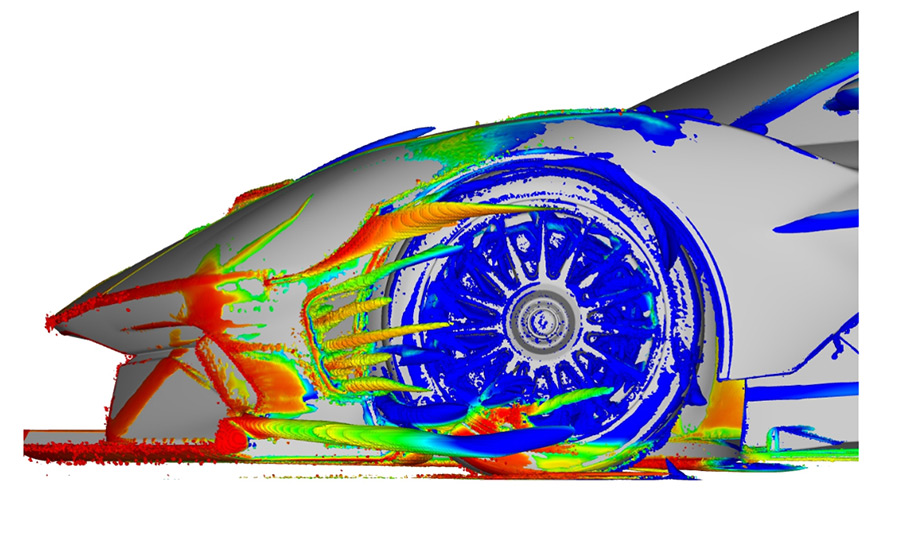
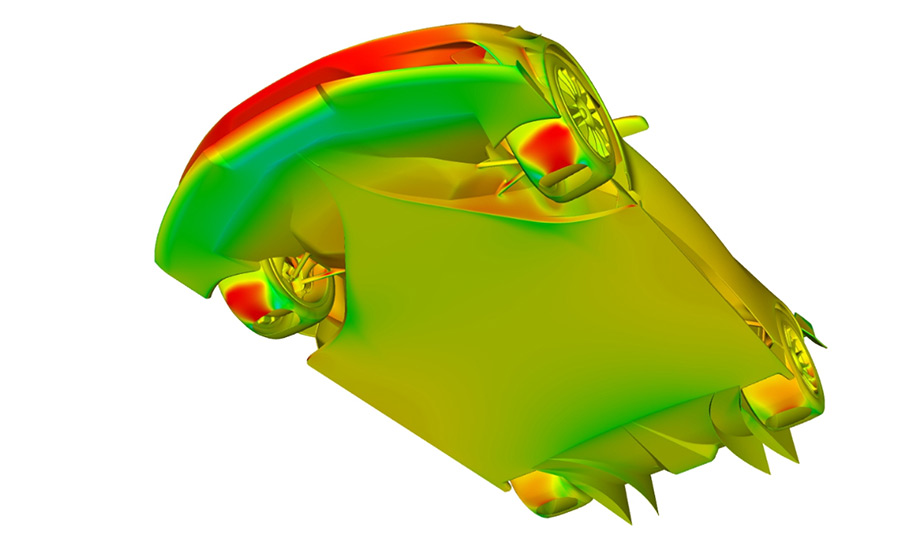
The image below shows a heat-map style indication of pressure around the upper body that is generated by the CFD analysis. Higher pressure zones shown in red provide the greatest contribution to total downforce.
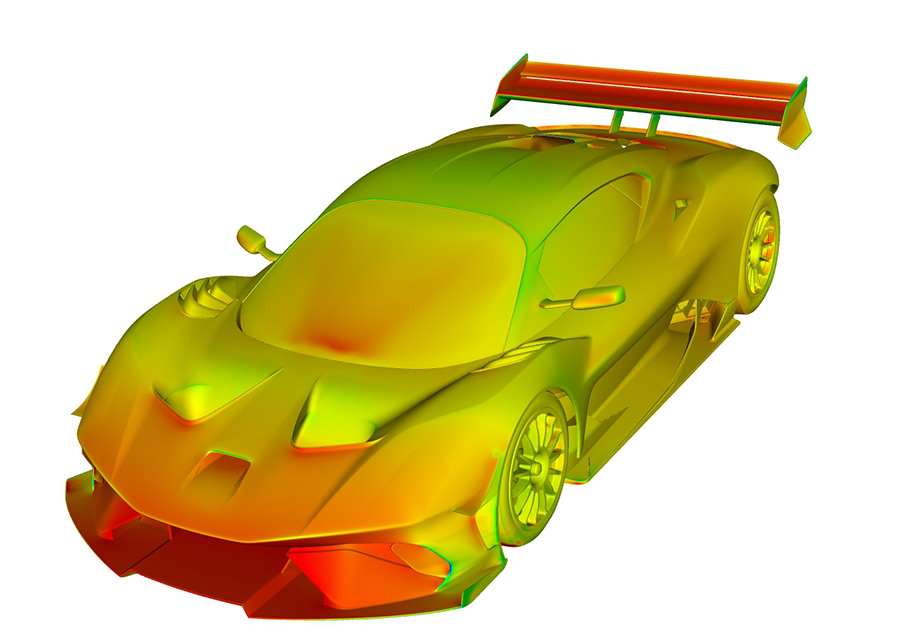
The BT62 was designed as a high-speed track car and as such, its emphasis is on high downforce. The bulk of its downforce comes from the rear wing, seen in red, above. This wing has a lift to drag ratio of 5:1, meaning that for every Newton of drag force, it creates 5N of downforce. This focus on downforce enables the car’s amazing cornering speed while pulling up to 3.5G’s.

Of course, with so much downforce in play, there is mechanical pressure on vehicle parts as the car compresses under aerodynamic load. At 300 km/h, the aero load results in 8mm deflection at the front and around 18mm at the rear. Deflection is sensitive to spring rates and addressed during the suspension setup but it highlights the importance of the BT62’s lightweight construction. The strength-to-weight ratio of materials like carbon-fibre makes the composite material an obvious choice for shedding load on critical parts while maintaining superior strength.
The result of all this is amazing grip and downforce figures that out-perform other high performance competitors. As the table above shows, that is despite having less overall power than most other rivals in its class. The BT62 is relatively lightweight and has a combination of elements – front splitter, end plates, turning vanes, flat underfloor, rear diffuser and rear wing – that work together to sculpt a path through the air that could be best described as engineering poetry. The vortex rooster tail shown on our test car below, during a wet run at Donington Park, England, reveals the effect better than any wind tunnel could!
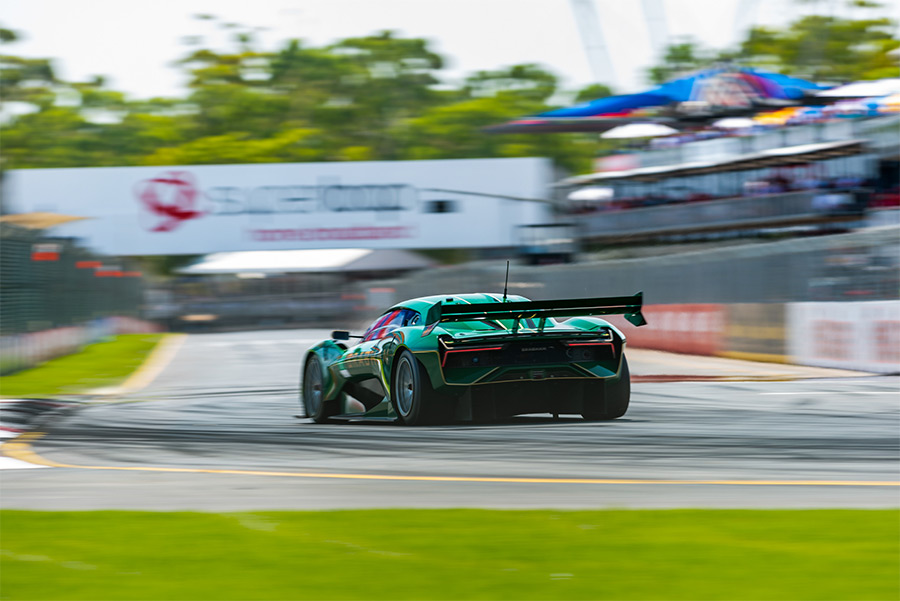
While most supercars have maximum downforce around 600kgs at top speed, the BT62 has an incredible 1600kgs of useable downforce at 300 km/h.
And, in answer the classic question about driving upside-down – we estimate that with full fluids and driver on board, the BT62 generates enough downforce (or would it now be called upforce?) to drive upside-down at around 265 km/h.
Sir Jack Brabham’s reputation was not merely based on his personal driving achievements. Together with Ron Tauranac, Sir Jack designed and built the most advanced racing machines of his day.
Brabham Automotive continues the tradition, building the world’s most dynamic vehicles for the champions of tomorrow.


